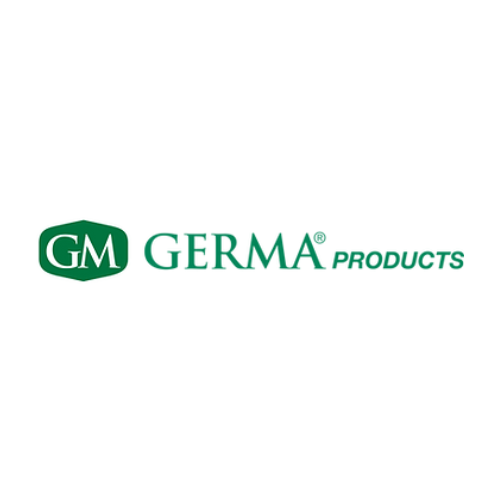
Why Amazon Net PPM Matters for Your Vendor Business Success
Introduction
Amazon has become one of the most significant sales channels for vendors worldwide, offering an enormous customer base and global reach. However, with its competitive marketplace, success depends on more than just selling a high volume of products. One crucial factor vendors often overlook is Amazon Net PPM (Profit Per Million). This metric plays a critical role in determining the real profitability of your business, as it accounts for all the costs and fees associated with selling on Amazon.
Understanding your Net PPM can help you make smarter business decisions, ensuring long-term growth and success. In this blog, we will explore what Amazon Net PPM is, why it matters, and how you can use it to optimize your business.
1. Understanding Amazon Net PPM
Amazon Net PPM, or Profit Per Million, is a key financial metric that measures the net profit generated per million units sold on the platform. Unlike gross profit, which only accounts for the difference between sales revenue and the cost of goods sold (COGS), Net PPM takes into consideration various costs and fees that affect your overall profitability. These include shipping fees, advertising costs, Amazon fulfillment fees, and any applicable rebates or discounts. By factoring in these additional expenses, Amazon Net PPM provides a clearer and more accurate view of your business's profitability.
Knowing how to calculate and interpret your Net PPM is essential for vendors, as it allows you to gauge how well your products are performing in financial terms. It also highlights areas where costs can be reduced or managed more effectively, ensuring that your business remains profitable despite fluctuating fees or market conditions.
2. Why Net PPM is a Key Metric for Vendors
Amazon Net PPM is more than just a financial metric; it is a vital tool that helps vendors measure the true profitability of their products. While gross profit can give you a general idea of how much you’re earning, it doesn’t account for the numerous fees and operational costs tied to selling on Amazon. Without considering these factors, you may assume your business is more profitable than it really is, which can lead to poor financial planning and decision-making.
By focusing on your Amazon Net PPM, you can:
- Accurately track your product performance.
- Determine which products are driving your profits and which are causing losses.
- Ensure that your pricing strategy covers all operational expenses, resulting in sustainable profit margins.
- Align your business strategy with profitability goals, ultimately leading to more informed decisions about product offerings and vendor agreements.
3. Factors Affecting Net PPM
Several factors can influence your Amazon Net PPM, making it a fluctuating metric that requires constant monitoring. Some of the key drivers include:
- Vendor Agreements: The terms you negotiate with Amazon can significantly affect your Net PPM. Amazon often imposes different terms and conditions based on the vendor's size, product category, and sales history. These agreements can include discounts, fees, and promotional support, all of which impact your bottom line.
- Operational Costs: These include Amazon’s fulfillment fees, shipping costs, and storage fees for inventory held in Amazon warehouses. For vendors who use Amazon’s FBA (Fulfilled by Amazon) service, these fees can be substantial, especially if the products are large or have low turnover rates.
- Advertising Spend: Many vendors rely on Amazon’s advertising services to promote their products. While advertising can increase sales, it also eats into profit margins. Analyzing your Net PPM with advertising costs in mind helps you evaluate whether your ad spend is delivering a positive return on investment (ROI).
- Rebates and Promotions: Offering discounts and participating in Amazon’s promotions can attract more buyers but can also reduce your Net PPM. It’s important to strike the right balance between driving sales and maintaining profitability.
4. The Impact of Net PPM on Business Decisions
Your Amazon Net PPM has a direct impact on a variety of business decisions, from pricing and product assortment to vendor negotiations. When you have a clear understanding of your Net PPM, you can make more informed decisions that align with your profitability goals.
- Pricing Strategy: One of the most significant impacts of knowing your Net PPM is setting the right price for your products. By factoring in all costs, including Amazon fees and operational expenses, you can ensure that your pricing covers all these elements while still delivering a healthy profit margin.
- Product Assortment: Focusing on products with higher Net PPM allows you to prioritize items that contribute more to your profitability. This can help you optimize your product catalog by eliminating low-margin products and emphasizing those that are more financially rewarding.
- Negotiation Leverage: When negotiating vendor agreements with Amazon, your Net PPM provides leverage. Vendors with a strong understanding of their financial metrics can negotiate better terms, whether it’s seeking lower fees or securing more favorable discounts or promotional support.
By closely monitoring your Amazon Net PPM, you can make strategic decisions that not only enhance short-term profitability but also contribute to long-term business success.
5. Improving Your Net PPM
Optimizing your Amazon Net PPM is essential to improving your business's overall profitability. A higher Net PPM means you’re earning more profit for every million units sold, which can translate into greater business success. Here are some strategies to help you improve your Net PPM:
- Optimize Your Supply Chain: Reducing operational inefficiencies in your supply chain can significantly lower costs. This includes optimizing production processes, reducing shipping fees, and minimizing inventory storage costs. For example, managing your inventory levels more efficiently can help you avoid Amazon’s long-term storage fees.
- Review and Negotiate Vendor Agreements: Regularly review your vendor agreements with Amazon and seek opportunities to negotiate better terms. This could involve lowering fees, securing higher volume-based discounts, or reducing the costs of promotional participation. An improved agreement can boost your Net PPM by reducing overall costs.
- Invest in Cost-Effective Advertising: While advertising is necessary to drive sales, it’s essential to ensure that your ad spend is providing a good return on investment. Use Amazon’s performance data to evaluate your advertising campaigns and shift your budget toward more profitable keywords and products. By reducing wasted spend on ads, you can improve your Net PPM without sacrificing visibility.
- Minimize Product Return Rates: Returns can negatively impact your Net PPM, as they involve refunding the customer and possibly incurring additional fees. Focus on improving product quality and providing accurate product descriptions to minimize return rates. By reducing the frequency of returns, you can maintain healthier profit margins.
- Monitor Seasonal Trends: Certain times of the year, like holidays or peak shopping seasons, can affect costs and demand. By adjusting your pricing strategy during these periods and anticipating higher demand, you can boost your sales while keeping costs in check, thereby improving your Net PPM.
6. Long-term Business Success through Net PPM
Tracking and optimizing your Amazon Net PPM over time can have a significant impact on the long-term success of your business. By continuously analyzing your Net PPM, you gain deeper insights into the financial health of your business and can make more informed decisions.
- Sustainable Profitability: One of the main advantages of focusing on Net PPM is that it helps you maintain sustainable profit margins. Instead of relying solely on revenue growth, which can sometimes mask underlying cost issues, Net PPM ensures that your profits remain healthy even as your business expands.
- Adaptability: The e-commerce landscape is constantly evolving, with changes in consumer preferences, fees, and vendor agreements. Vendors who regularly monitor their Net PPM are better equipped to adapt to these changes. For instance, if Amazon increases its fees, a vendor who understands their Net PPM can adjust pricing or product offerings accordingly to maintain profitability.
- Data-Driven Decisions: By relying on your Amazon Net PPM, you can make decisions based on data rather than intuition. Whether it’s expanding into new product categories, entering new markets, or negotiating better terms with Amazon, your Net PPM provides the financial clarity needed to grow your business effectively.
Conclusion
In the competitive Amazon marketplace, understanding and optimizing your Amazon Net PPM is crucial to long-term vendor success. Net PPM goes beyond gross profit by accounting for all the costs associated with selling on Amazon, offering a more accurate reflection of your business’s profitability. By focusing on improving your Net PPM through strategies like supply chain optimization, better vendor agreements, and cost-effective advertising, you can significantly boost your profit margins.
FAQs
1. What is Amazon Net PPM?
Net PPM stands for Profit Per Million and measures the profit generated per million units sold, taking into account all costs and fees.
2. How is Net PPM calculated?
Net PPM is calculated by subtracting all associated fees, costs, and discounts from the gross revenue, and then dividing by the total units sold (per million).
3. Why does Net PPM fluctuate?
Net PPM can change due to seasonal demand, shifting operational costs, changes in Amazon fees, and variations in vendor agreements.
4. Can I improve my Net PPM without increasing prices?
Yes, by optimizing operational efficiency, reducing fees, and negotiating better terms with Amazon.
5. Is Net PPM the same across all product categories?
No, Net PPM can vary significantly by category due to differing margins, fees, and demand levels.




